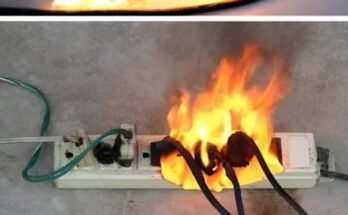Removal of a Basal Cell Cancer on the Face: A Complete Guide
Basal Cell Cancer, also known as Basal Cell Carcinoma (BCC), is the most common type of skin cancer that affects millions of people worldwide. When diagnosed with Basal Cell Cancer on the face, it is essential to undergo a proper removal procedure to eliminate the cancerous cells and prevent further complications. In this article, we will discuss the process of removing a Basal Cell Cancer on the face, including the recommended Mohs procedure, recovery, and follow-up care.
Understanding Basal Cell Cancer
Basal Cell Cancer typically develops on areas of the skin that have been exposed to the sun, such as the face, neck, and head. It often appears as a pearly bump or a flat, scaly patch that doesn’t heal. If left untreated, Basal Cell Cancer can grow larger and deeper into the skin, causing disfigurement and damage to surrounding tissues. That’s why early detection and removal are crucial in managing this type of skin cancer.
The Mohs Procedure for Basal Cell Cancer Removal
Ideally, Basal Cell Cancers should be removed using a Mohs procedure, which is a precise surgical technique that allows for the complete removal of cancerous cells while preserving as much healthy tissue as possible. During the Mohs procedure, the surgeon removes thin layers of skin one at a time and examines each layer under a microscope until no cancer cells are detected. This ensures that all cancerous tissue is removed while minimizing the impact on the surrounding skin.
Alternative Removal Methods
In some cases, especially for smaller Basal Cell Cancers, a simple excision procedure may be sufficient to remove the cancerous growth. During an excision, the surgeon cuts out the cancerous tissue along with a margin of healthy skin to ensure complete removal. After the excision, the wound is closed with stitches, and the removed tissue is sent to a lab for further examination to confirm that all cancer cells have been removed.
Recovery and Follow-Up Care
After the removal of a Basal Cell Cancer on the face, it is essential to follow the recommended post-operative care instructions to promote healing and prevent infection. This may include keeping the wound clean and dry, avoiding sun exposure, and attending follow-up appointments with your healthcare provider. Most patients experience minimal discomfort after the procedure, and the wound typically heals within a few weeks, leaving behind minimal scarring.
In conclusion, the removal of a Basal Cell Cancer on the face is a crucial step in managing this type of skin cancer and preventing its recurrence. Whether through a Mohs procedure or a simple excision, early detection and prompt treatment are key to achieving a successful outcome. If you suspect you may have Basal Cell Cancer or any other skin abnormality, it is essential to consult with a dermatologist for a proper evaluation and treatment plan. Remember, early detection saves lives.
Meta-description: Learn about the process of removing a Basal Cell Cancer on the face, including the recommended Mohs procedure, recovery, and follow-up care. Don’t wait, take action now!
By following the guidelines outlined in this article, you can ensure that the removal of a Basal Cell Cancer on the face is done efficiently and effectively, leading to a successful outcome and optimal skin health. Don’t wait, prioritize your skin’s health, and consult with a dermatologist if you have any concerns about skin cancer or other skin conditions. Remember, early detection and treatment are key to maintaining healthy skin and preventing serious complications.

